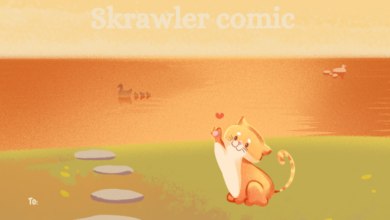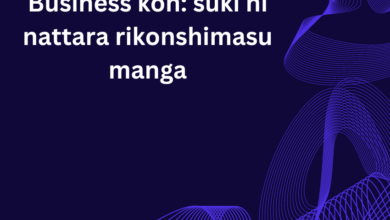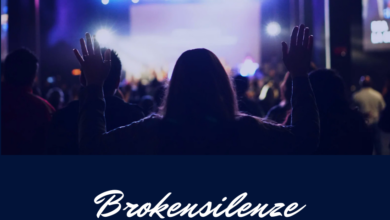Who is Dadiyanki: A Cultural Insight

Introduction
What exactly is Dadiyanki? For those unfamiliar, refers to a unique cultural practice or tradition that has deep roots in history and has evolved with time. It’s more than just a word—it’s a representation of heritage, community, and identity.
In many cultures, plays a vital role in the day-to-day lives of people. It’s woven into their customs, beliefs, and even their arts. In this article, we will explore the history, meaning, and impact of and how it continues to influence modern culture.
Historical Origins
Where did Dadiyanki originate?
Dadiyanki’s origins can be traced back to ancient times, where it was closely associated with rituals, spiritual practices, and social events. Initially, it may have started in small communities or tribes but eventually spread to wider regions, becoming a core part of many societies.
How has Dadiyanki evolved over time?
As societies modernized, so did the practice of Dadiyanki. What may have once been a local tradition grew into something much larger. Over time, some aspects of were modified to suit the current cultural climate, while others remained untouched, preserving the original essence of the practice.
The Meaning Behind Dadiyanki
Symbolism and Significance in Society
Dadiyanki isn’t just about rituals or traditions; it carries a profound symbolic meaning. In various cultures, represents the connection between the past and present, linking generations together through shared customs and values. It often signifies unity, family, and continuity.
Dadiyanki in Folklore and Tradition
Throughout history, Dadiyanki has been celebrated in folklore and stories passed down through generations. These tales highlight its importance in maintaining cultural identity and often feature characters or events that exemplify its principles.
Modern Culture
How is Dadiyanki practiced today?
In today’s world, Dadiyanki has adapted to fit modern lifestyles. While some elements of traditional practices remain, many people have found new ways to incorporate into their daily lives. Festivals, community gatherings, and even social media have become platforms for people to celebrate this tradition.
Contemporary Representations
Modern-day can be seen in various forms, from fashion and art to television and cinema. It has become a source of inspiration for many creative industries, ensuring that the tradition stays relevant in an ever-changing world.
The Role of Dadiyanki in Community
How Dadiyanki Shapes Social Interactions
plays a crucial role in shaping how people interact with one another. It provides a framework for social norms, helping individuals understand their place within the community. Many customs around greetings, respect for elders, and communal responsibilities stem.
Dadiyanki as a Unifying Cultural Practice
In a world where cultures are increasingly blending, serves as a strong unifying force. It brings people together, regardless of their background, by emphasizing shared traditions and values.
Rituals and Practices Surrounding Dadiyanki
Traditional Practices and Their Meanings
The rituals associated with Dadiyanki often involve specific gestures, offerings, or ceremonies that have been passed down through generations. These practices hold deep meanings, often symbolizing gratitude, remembrance, or celebration.
Key Events and Festivals Related to Dadiyanki
Throughout the year, there are several key events and festivals that revolve around. These gatherings are an opportunity for communities to come together, honor their ancestors, and reaffirm their cultural identity.
Dadiyanki in Art and Music
The Representation in Various Art Forms
Art has always been a powerful medium for expressing cultural practices, and Dadiyanki is no exception. From paintings and sculptures to performance art, has inspired countless works that depict its significance and beauty.
Dadiyanki in Songs and Storytelling
Music and storytelling are integral to keeping the tradition of Dadiyanki alive. Songs often reflect the emotions and stories associated with this practice, while oral traditions help pass down its history and relevance from one generation to the next.
Dadiyanki’s Influence on Language
Idioms and Expressions Stemming from Dadiyanki
Many idioms and phrases used in everyday language have their roots in These expressions serve as reminders of the values and lessons that the practice teaches.
Linguistic Impact of Dadiyanki
Beyond idioms, has influenced the structure and vocabulary of languages in the regions where it is practiced. This linguistic impact is a testament to its deep cultural roots.
Cultural Preservation
Efforts to Keep Dadiyanki Alive in a Globalized World
As globalization continues to blur cultural lines, there has been a growing effort to preserve. From cultural organizations to government initiatives, many are working hard to ensure that future generations can experience and understand this tradition.
Challenges to Maintaining Dadiyanki’s Relevance
Despite these efforts, there are significant challenges in keeping relevant. The fast-paced nature of modern life, along with the homogenizing effects of global media, threatens to erode some of the deeper connections people have with this practice.
Future of Society
How Youth are Interacting with Dadiyanki Today
Interestingly, younger generations are finding new ways to engage with While they may not follow all the traditional aspects, they are reinventing the practice in ways that make sense for their contemporary lives.
Will Dadiyanki Continue to Thrive?
The future of looks promising. As long as people continue to find meaning in its rituals and stories, and adapt it to the changing times, it will remain a vital part of cultural identity.
Conclusion
Dadiyanki is not just a practice, but a living, breathing tradition that connects people to their history, community, and values. It has withstood the test of time, evolving alongside societies while maintaining its core significance. As modern life continues to change, offers a glimpse into the power of cultural continuity and the resilience of human traditions.



